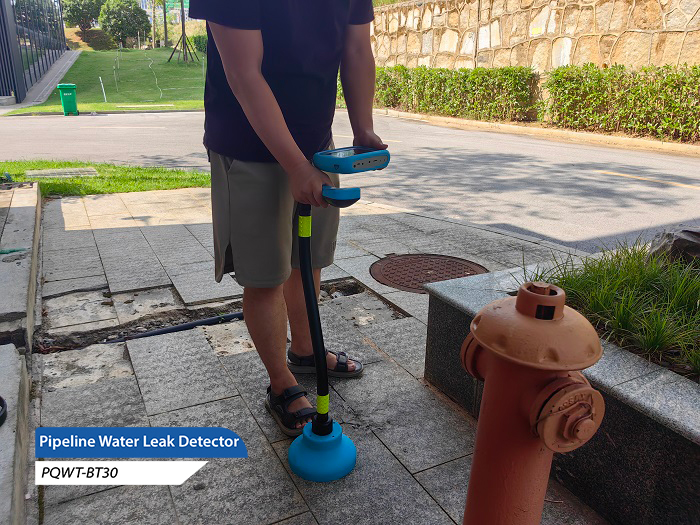In modern urban infrastructure, buried pipelines serve as important channels for transporting resources such as water, gas, and oil, and their stability and safety are crucial. However, due to the long-term burial of pipelines underground and various factors such as soil corrosion and external compression, water leakage problems often occur. Timely detection and repair of water leakage not only concerns resource conservation, but also directly relates to the safety of urban environment and residents' lives. This article will explore the commonly used instruments and their working principles for detecting water leakage in buried pipes.

1、 Sound locator and electronic listening device
Sound locators and electronic leak detectors are the most basic and commonly used tools in leak detection. By capturing the specific sound produced when a pipeline leaks, these instruments can preliminarily locate the leak point. Sound locators are usually equipped with high-sensitivity microphones that can amplify and identify faint water leakage sounds. The electronic leak detector goes further by converting the sound signal into a visualized waveform, helping the detection personnel to more accurately determine the location of the leak.
Underground water detection is a professional equipment designed specifically for detecting leaks in underground pipelines. It combines various technologies such as sound localization and vibration analysis, and can be directly placed on exposed pipelines or on the ground near buried pipelines. By detecting small vibrations and sound changes caused by water leakage, it can accurately locate the leakage point. These types of instruments usually have high precision and sensitivity, and can work effectively in complex environments.
3、 Pressure gauge tester
Pressure gauge detector is another important tool for water leakage detection. By injecting water at a certain pressure into the pipeline and observing the changes in the pressure gauge pointer, it is possible to preliminarily determine whether there is water leakage in the pipeline. If the pressure gauge pointer suddenly drops after stabilizing, it indicates that there is a leak in some part of the pipeline. Although this method is simple, it can quickly narrow down the leakage range and provide important reference for subsequent detection.
4、 Infrared thermal imaging device
Infrared thermography uses photoelectric technology to detect specific infrared band signals of thermal radiation from objects, and converts the signals into images and graphics that can be recognized by humans. In the detection of underground pipeline leakage, infrared thermography can scan the pipeline network area and discover underground leakage points by comparing the temperature differences in different areas. Due to the fact that water leakage can cause a decrease in the temperature of the surrounding soil, the location of the leakage point can be clearly reflected in infrared images.
5、 Other auxiliary equipment
In addition to the main instruments mentioned above, there are also some auxiliary equipment that play an important role in water leakage detection. For example, groundwater level gauges can monitor changes in groundwater levels and provide background data for leak detection; The pipeline camera can penetrate deep into the interior of the pipeline and observe the corrosion and damage on the inner wall of the pipeline; Pipeline flow meters are used to measure changes in flow inside pipelines and help determine the degree of water leakage.
6、 Conclusion
Underground pipe leakage detection is a complex and important task that requires the use of various modern instruments and technological means. Sound locators, electronic leak detectors, underground water detection devices for buried pipes, pressure gauge detectors, and infrared thermal imaging devices each have their own advantages and can be used separately or in combination to improve the accuracy and efficiency of water leakage detection. However, due to certain barriers to entry when using professional equipment, it is recommended to seek inspection and repair from a professional leak prevention company when encountering water leakage problems.
By scientifically and reasonably using these detection instruments and technological means, we can promptly detect and repair water leakage problems in buried pipelines, ensure the safe and stable operation of urban infrastructure, and create a better living environment for residents.








